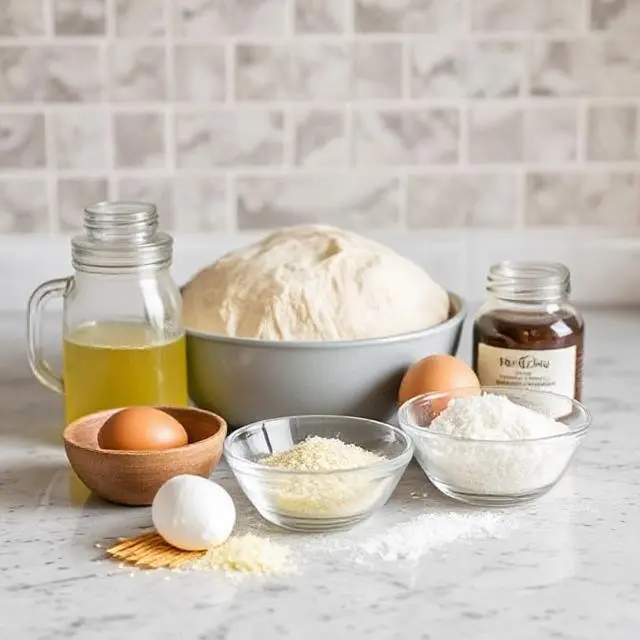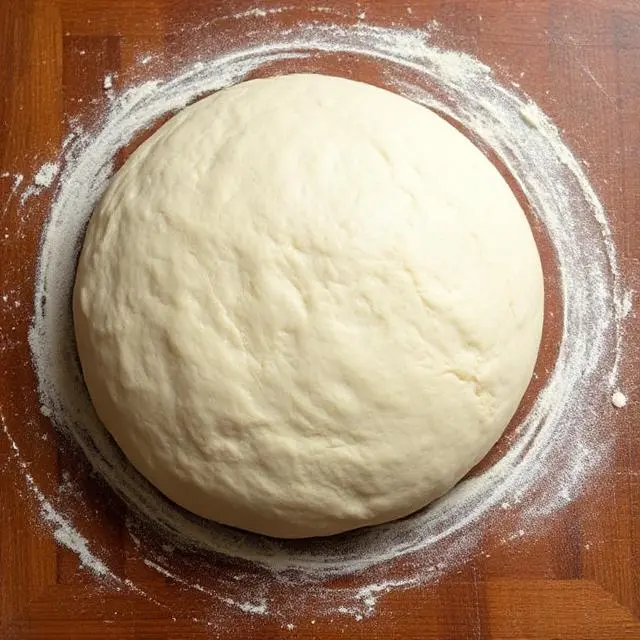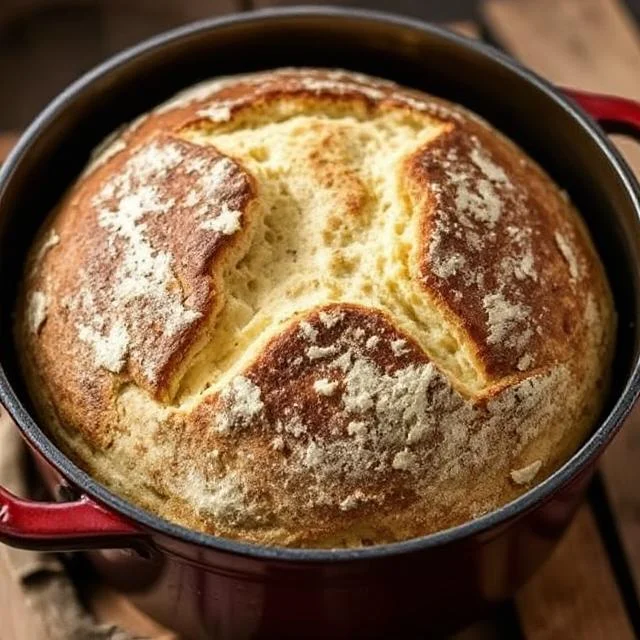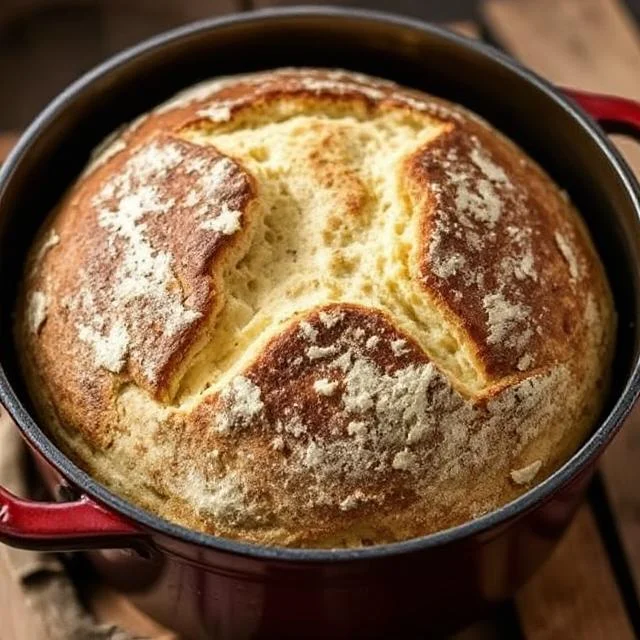Introduction: Why You’ll Love Homemade Sourdough Bread Recipe
Sourdough Recipe bread is one of the most beloved breads around the world. It’s known for its tangy flavor and chewy texture, which come from its unique fermentation process. Whether you’re new to bread-making or a seasoned pro, this foolproof sourdough recipe guarantees a fluffy, perfectly baked loaf every time. In this guide, we’ll walk you through the essential ingredients, step-by-step instructions, and troubleshooting tips to help you make sourdough bread like a pro!
Essential Ingredients for Sourdough Bread Recipe
Making sourdough bread requires just a few key ingredients that come together to create the perfect loaf.
Flour: Choosing the Best Flour for Sourdough Bread
Flour is the foundation of your bread, and the type of flour you choose affects both the texture and flavor. Bread flour is ideal because it has a higher protein content, which helps the dough rise better. Whole wheat or rye flour can add additional flavor and enhance fermentation. Make sure to use high-quality flour for the best results.
Sourdough Recipe Starter: What Is It and How to Make One
A sourdough Recipe starter is a mixture of flour and water that captures wild yeast and bacteria from the air. This starter is essential for fermentation and gives sourdough its distinctive flavor. You can either make your own starter from scratch or purchase one from a bakery or store.
Water and Salt: Simple Yet Essential
Water and salt are crucial in the dough-making process. Filtered water is recommended to avoid chlorine, which can interfere with fermentation. Salt, while adding flavor, also helps to control the fermentation process and strengthens the dough.
Optional Ingredients: Enhancing Flavor
You may choose to add sugar, honey, or olive oil to your sourdough for a slightly different texture or taste. These ingredients can help with browning and add a subtle sweetness or richness to the bread.

Ingredients for sourdough recipe bread on a countertop
Step-by-Step Guide to Making Sourdough Bread Recipe
Preparing the Sourdough Recipe Starter
Before you begin baking, your starter must be active. Combine equal parts flour and water, then let it sit for a few days, feeding it regularly with fresh flour and water. When your starter is bubbly and has a pleasant sour smell, it’s ready to use.
Mixing the Dough: Achieving the Right Consistency
Mix your starter with flour, water, and salt to form a dough. Use your hands or a dough hook to knead the dough until it’s smooth and elastic. The dough should feel slightly tacky but not sticky.
Bulk Fermentation: Allowing the Dough to Rise
After mixing the dough, let it rise for several hours or overnight. This stage is key to developing the dough’s flavor and texture. Ensure your dough doubles in size before moving to the next step. Stretch and fold the dough every 30 minutes to build strength.
Shaping the Dough: Getting the Perfect Loaf Shape
Once the dough has risen, it’s time to shape it into a loaf. Gently shape the dough into a round or oval loaf by folding the edges toward the center. Be careful not to deflate the dough too much to maintain the rise.

Shaping sourdough dough into a loaf.
Baking Sourdough Recipe Bread to Perfection
Preheat the Oven and Prepare the Equipment
Preheat your oven to 475°F (245°C) and prepare your baking equipment. A Dutch oven is ideal for baking sourdough, as it creates the perfect environment for steaming the bread. If you don’t have one, use a baking stone with a pan of water for steam.
Scoring the Dough: Why It Matters
Scoring the dough helps it rise evenly in the oven. Use a sharp blade to make shallow cuts across the top of the dough. This allows the bread to expand as it bakes, resulting in a beautiful, airy crumb.
Baking Time and Temperature: Perfecting the Crust
Bake your sourdough Recipe for 20 minutes with the lid on (if using a Dutch oven) to create steam, then remove the lid and bake for another 20-30 minutes until the crust is golden brown. The internal temperature should reach about 200°F (93°C) when done.
Cooling the Bread: Let It Rest
Once baked, remove the bread from the oven and let it cool on a wire rack for at least an hour before slicing. This helps set the crumb and prevents it from being too doughy.

Sourdough bread baking in a Dutch oven
Troubleshooting Common Sourdough Bread Issues
Dense or Heavy Loaf
A dense loaf can result from under-fermentation, using a weak starter, or not kneading enough. To fix this, give the dough more time to rise and ensure your starter is active before using it.
Overly Sour Flavor
If your sourdough is too sour, it may be due to over-fermentation or using a too-active starter. Try reducing fermentation time or adjusting your starter feeding schedule for a milder flavor.
Crust Not Crispy Enough
If your crust isn’t as crispy as you’d like, you can increase the oven temperature or add more steam during baking. Ensure the oven is preheated fully before placing the dough inside.
How to Store and Serve Your Homemade Sourdough Bread
Properly Storing Sourdough Bread Recipe
To keep your sourdough fresh, store it in a paper bag or breadbox. For longer storage, freeze slices and toast them when ready to use.
Serving Suggestions
Sourdough pairs beautifully with soups, stews, or as a side to any meal. Try it with a spread of butter, olive oil, or your favorite jam.
Creative Ways to Use Leftover Sourdough Recipe
Turn stale sourdough into croutons, bread pudding, or French toast for a delicious new dish.
Conclusion: Mastering the Art of Sourdough Bread
Making homemade sourdough bread is a rewarding process that yields delicious results. By following this foolproof recipe and mastering a few key techniques, you can enjoy freshly baked, fluffy loaves anytime. Share your sourdough journey in the comments and experiment with different flavors and shapes!
Advice
Making sourdough bread at home may seem intimidating, but with the right approach, it’s actually quite simple and incredibly rewarding. Start by creating a strong starter, which is key to achieving that signature tangy flavor and airy texture. Feed your starter regularly with equal parts water and flour to keep it active and bubbly. Once it’s ready, mix it with your dough ingredients, knead until smooth, and give it plenty of time to rise in a warm place. Patience is key in sourdough—allowing the dough to ferment slowly will develop its flavor and texture. After shaping your loaves, let them rise again before baking in a preheated oven, ideally with steam to create a crisp crust. The result will be a beautifully golden, fluffy loaf with the perfect balance of tangy flavor and soft, chewy crumb.

